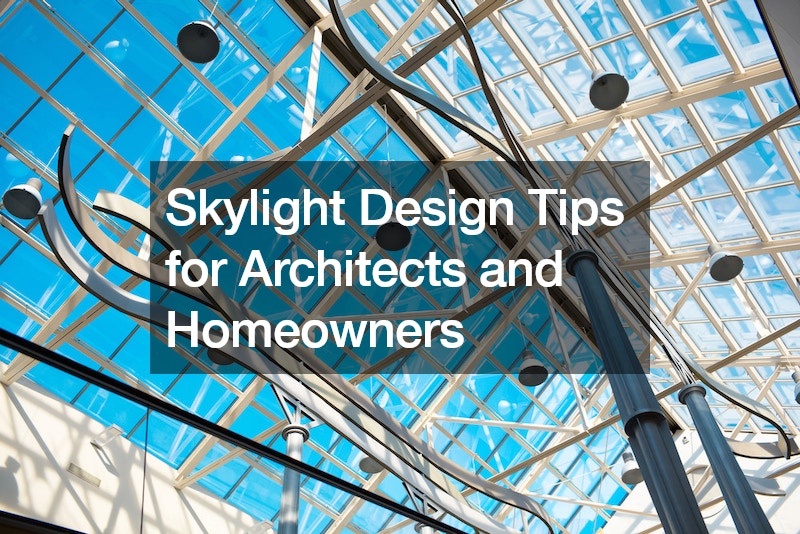Skylights are more than just architectural elements; they’re conduits for natural light that can transform interior spaces. Whether you’re an architect designing a new building or a homeowner looking to enhance your living space, incorporating skylights intelligently can significantly impact the ambiance and functionality of a structure. Here are some essential tips to consider when integrating skylights into your design.
Maximizing Natural Light
Natural light is a powerful force that can uplift our moods and enhance our living environments. When designing with skylights, prioritize maximizing the amount of natural light entering the space. Consider the orientation of the skylight to ensure optimal lighting conditions throughout the day. North-facing skylights provide cooler, even light, while south-facing ones offer intense brightness but may require shading to prevent overheating.
Integration with Architecture
For skylights to be effective, they must seamlessly integrate with the overall architectural design. Conceal the frame of the skylight to create a seamless connection between the interior and the sky above. This visual trickery can make even basic skylights appear more expansive and integrated into the space. Additionally, think beyond traditional rectangular shapes and experiment with innovative designs that complement the building’s aesthetic.
Consider Self-Cleaning Glass
Investing in self-cleaning glass for skylights can save you time and effort in maintenance. This special coating breaks down surface dirt, allowing it to be washed away by rainwater. While the upfront cost may be higher, the long-term benefits in terms of reduced cleaning and maintenance make it a worthwhile investment for both architects and homeowners.
Shape and Size Matter
When it comes to skylights, think bigger and bolder. Oversized skylights can flood interior spaces with natural light, creating a sense of openness and wonder. Consider running skylights the entire length of a room to eliminate the need for artificial lighting during the day and to delineate special zones within the space. Additionally, altering the shape of skylights can have a dramatic impact on the amount of light they let in and the aesthetic statement they make.
Passive Cooling Benefits
Skylights can also serve as efficient passive cooling devices when strategically placed. By opening skylights at the top of stairwells or high points in the building, warm air can escape, creating a natural airflow that cools the interior space. Opt for motorized skylights for ease of use, as they are more likely to be utilized regularly compared to manual options.
Daylighting Private Spaces
Admitting daylight into private spaces can create a serene and calming atmosphere. Skylights are particularly effective in bringing natural light into areas such as bathrooms and bedrooms, where privacy is essential. Consider incorporating skylights or Sun tunnels to introduce indirect light into spaces that wouldn’t otherwise have access to daylight, making them feel larger and more inviting.
Control Contrast
To avoid uncomfortable contrasts and eye strain, provide light from multiple directions within a space. This can be achieved by combining skylights with windows or other light sources to create a more balanced and evenly illuminated environment. Additionally, consider using etched or sandblasted glass to diffuse light and minimize glare, especially in areas where direct sunlight may be intense.
Skylights are important for several reasons in architecture:
- Natural Light: Skylights let natural sunlight to enter a building, providing a pleasant and visually appealing environment. Natural light has been shown to improve mood, productivity, and overall well-being.
- Energy Efficiency: By utilizing natural light during the day, skylights can lessen the need for artificial lighting, thus lowering energy consumption and utility costs. This can contribute to a more sustainable and environmentally friendly building design.
- Aesthetics: Skylights can enhance the aesthetics of a space by creating visually striking architectural features. They can add drama and interest to interior design, particularly in areas where traditional windows may not be practical or feasible.
- Ventilation: Some skylights are designed to allow natural ventilation and airflow within a building. This can help control indoor temperatures, improve air quality, and reduce the reliance on mechanical HVAC systems.
- Privacy: Skylights can provide natural light without compromising privacy, especially in urban or densely populated areas where traditional windows may face neighboring buildings or streets.
- Health Benefits: Exposure to natural light has been linked to various health benefits, including better sleep patterns, improved concentration, and enhanced vitamin D production. Skylights can facilitate greater access to natural light, promoting occupant health and well-being.
Conclusion
Skylights offer architects and homeowners a versatile tool for harnessing the beauty and benefits of natural light. By carefully considering factors such as orientation, integration with architecture, and size, skylights can elevate the design of any space while improving its functionality and livability. Whether you’re aiming to create a bright and airy living room or a tranquil oasis in your bedroom, incorporating skylights thoughtfully can make a significant difference in the ambiance and enjoyment of your home.
.


